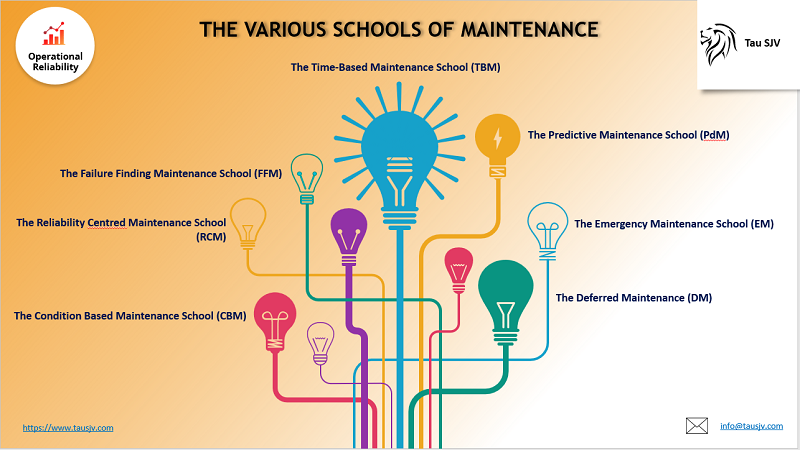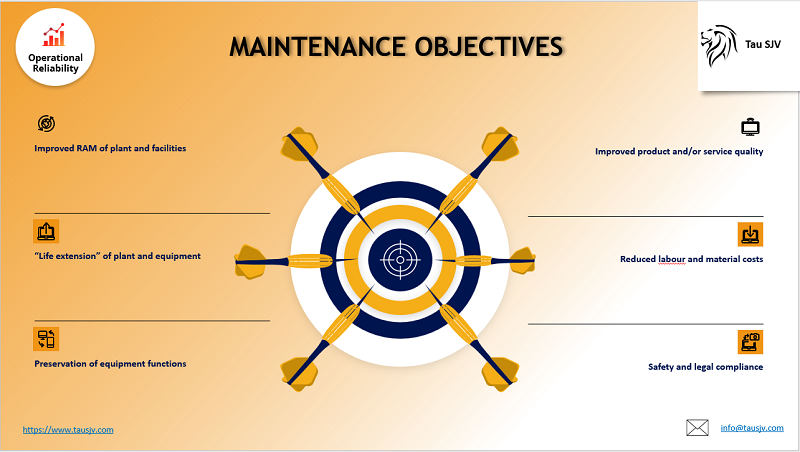INTRODUCTION
Maintenance is defined as the combination of all technical and administrative activities i.e., planning, scheduling, execution, monitoring and control, by which equipment or a system is kept in, or restored to, a specified operating condition in which it can perform its designated functions. Maintenance strategies refer to plans or approaches that organizations use to ensure the optimal functioning and longevity of their assets, equipment, facilities, or systems. Effective maintenance strategies are crucial for reducing downtime, improving safety, minimizing repair costs, and maximizing the lifespan and performance of assets. There are several maintenance strategies to choose from, each with its own advantages and suitable applications. Here are some common maintenance strategies:
- Time-Based Maintenance (TBM): TBM focuses on regular scheduled inspections, servicing, and repairs to prevent any potential failures or breakdowns. Its aim is to identify and prevent issues before they cause major disruptions or costly breakdowns.
- Failure Finding Maintenance (FFM): FFM aims to identify hidden or latent failures in equipment or systems. It involves performing inspections, tests, or analyses to uncover potential failures before they occur.
- Risk-Based Maintenance (RBM): RBM focuses on identifying critical assets and developing maintenance strategies tailored to their specific needs. It aims to maximize reliability, safety, and cost-effectiveness. Requires a thorough analysis of asset functions, failure modes, and consequences.
- Condition-based Maintenance (CBM): CBM monitors real-time data from equipment to assess its condition and trigger maintenance when necessary. Minimises downtime and reduces unnecessary maintenance activities. It allows maintenance activities to be scheduled based on the actual health and performance of the equipment.
- Predictive Maintenance (PdM): PdM uses data and condition monitoring techniques (such as sensors and predictive analytics) to predict when equipment will require maintenance. It minimises downtime by performing maintenance only when needed. Requires investment in monitoring equipment and data analysis tools.
- Deferred Maintenance (DM): Following DM is a conscious decision to delay fixing a known issue or failure to minimize disruptions or production downtime. Typically used for non-critical, easily replaceable assets. No planned maintenance is performed; equipment is run until it fails, then replaced. Appropriate for cases where the cost of maintenance outweighs the cost of replacement.
- Emergency Maintenance (EM): EM involves urgent, unplanned repairs or maintenance actions that need to be addressed immediately to prevent safety hazards, equipment damage, or production disruptions. It typically occurs in response to unexpected failures or breakdowns that require immediate attention.
Selecting the most appropriate maintenance strategy depends on factors like the criticality of assets, available resources, budget constraints, and business objectives. Many organisations use a combination of these strategies to optimise maintenance efforts and maximise asset performance. Regularly reviewing and adjusting maintenance strategies based on performance data and changing conditions is essential for long-term success.
The decision to use RCM stems from a rigorous set of questions such as:
-
1) How does the failure occur?
2) What is the likelihood of failure?
3) What are its consequences?
4) What good can preventative maintenance do?
Unfortunately, not all failures can be prevented by scheduled maintenance task. In some cases, the failure mechanism is imperfectly understood, in others its random, and in yet others the cost of such inspections exceeds the benefits they may provide. In fact, PM is not possible for many items of modern complex equipment. Nor, in all cases, is it necessary. Thus, if the intended use of the equipment is of significant safety and value, the delay or abandonment of that use will constitute a significant loss. Other failures will incur only the cost of corrective action, and such failures may well be tolerable, in the sense that it’s less to correct them as they occur than to invest in the cost of preventing them. The driving element in all maintenance decisions is not the failure of a given item, but the consequences of that failure for the equipment. The major products of RCM is the development of scheduled and pro-active maintenance plans.



